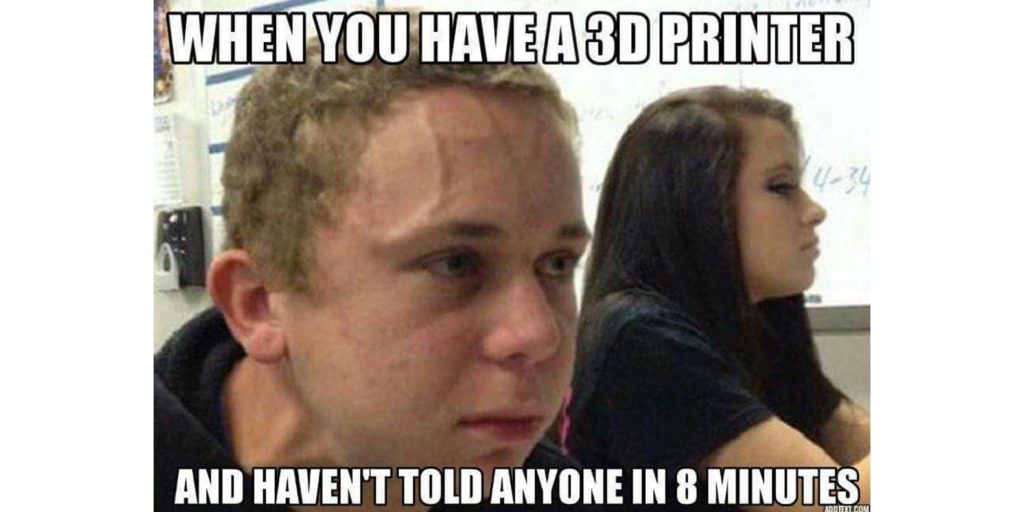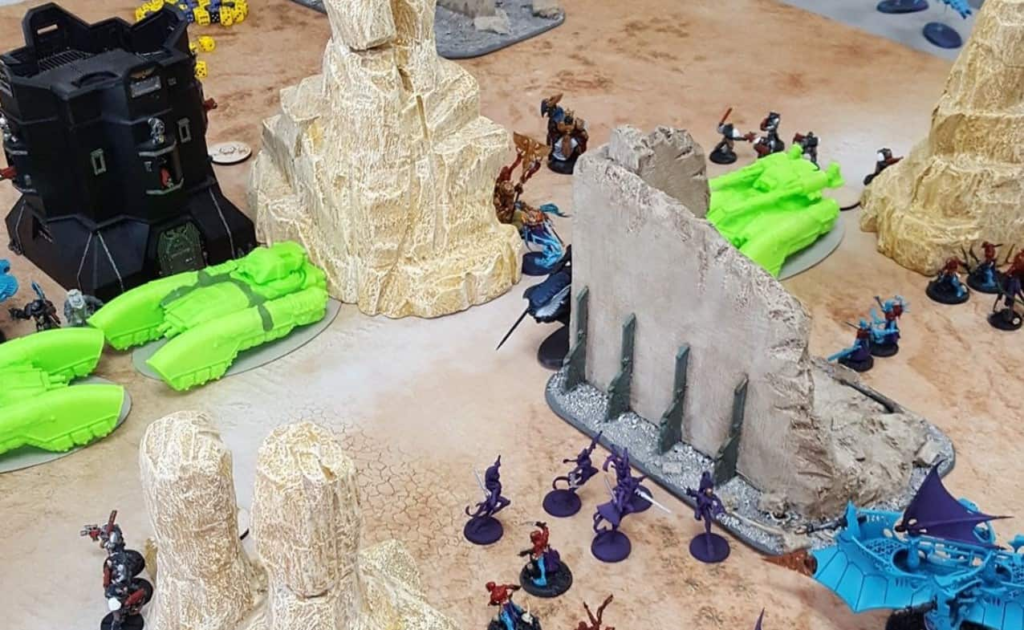Hi everyone,
It’s Wednesday which means it’s time for another spicy editorial! Today we will be looking at the ways that 3D printing has continued to impact the hobby, as well as what future repercussions that might be around the corner.
History:
So 3D printers have been a thing for a while now. When they first started to pop up everywhere there was a lot of consternation about how they would impact the competitive scene. To be fair, many of these early fears were well-founded. There were examples of players printing out cheap copies of important units and shoving them onto the table in order to chase the meta. As well as the infamous “Printed-Custodes incident” shown above. The proliferation of these proxy models looked bad and risked turning the competitive world into a race to see who could print the fastest (rather than a race between who could spend the most money/borrow models from friends as God intended).
In order to combat this “scourge” a number of events instituted bans on 3D printed models to stem the tide. One caveat to this was that players were still allowed to use conversions or 3rd party miniatures provided they were approved by the TO.
Current Situation:
If you haven’t been on Etsy recently, I will forgive you for asking why this article is relevant. What has happened over the past year is that the line between 3D printed and 3rd party models have been completely erased. Now this line was never that firm. If I bought a 3D printed model from a friend, under the old policy what would that count as? (Maybe Salty John could let me know). Nowadays, you can find almost any STL you like available for purchase on Etsy. Thus not only do these models exist in both categories, you can’t really prove if anyone actually bought the model vs. printed it themselves. Even being able to spot the difference between a traditional 3rd party miniature and a 3D-printed one would require an encyclopedic knowledge.
At the same time, we have seen the bans on 3D printed models start to disappear and be replaced with a beefed-up model review system. At the current LVO, all proxy models must be approved ahead of the event. Also, to play on stream you must use GW models. Additionally the “Battle-Ready” painting requirements discourage people from trying to print out an army or a bunch of models right before an event.
Moving Forward:
I know I have made jokes about shilling for GW, but am I allowed to shill for FLG? I think, if enforced fairly, this new policy is the perfect sustainable balance. 3D printing is here to stay and shouldn’t be fought but embraced. So long as players are using the technology wisely it can be a great way to encourage people to start out in the hobby. 3D printing lowers the barrier to entry for new armies, it makes it easier, and cheaper to acquire terrain, it is the paradigm shift that tabletop games have needed for a while.
Concerns about these models are still real. The line between a proxy and IP theft are sticky and need to be examined. I believe the answer to this is to make it easier to accept proxies (that do not provide an advantage) giving people less incentive to duplicate a model. At the same time, by restricting streamed games to GW-only models, it allows FLG to maintain their partnership and encourage people who think they will be competitive to play it safe and get the models.
In conclusion, the role of 3D printing is only going to grow in the hobby. Unless something drastic happens, these models will become a bigger part of war-gaming. TOs should start thinking about how they handle the various issues that can arise from players bring these models. This will hit smaller clubs harder as only one person might have a printer and use it to manufacture (literally) an advantage over their peers. The proliferation of Etsy alternatives will even this playing ground though. As ever, this will be something worth monitoring going forward as the market for war-games (and cheap shortcuts) grows.
And remember, Frontline Gaming sells gaming products at a discount, every day in their webcart!




